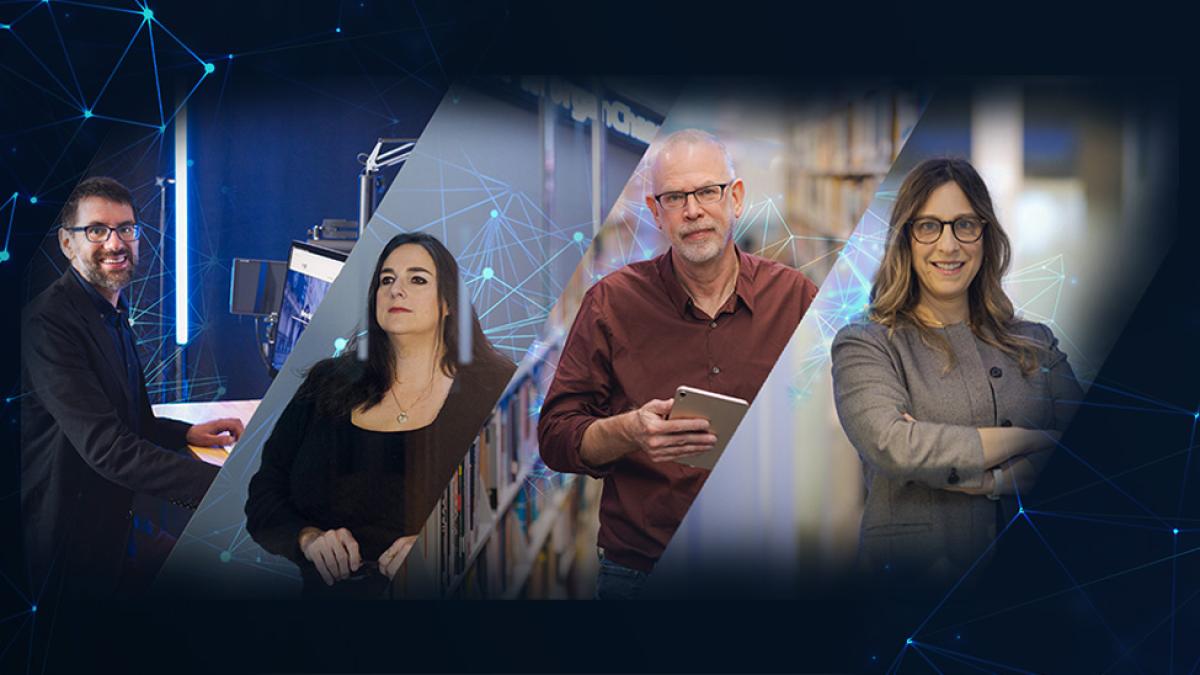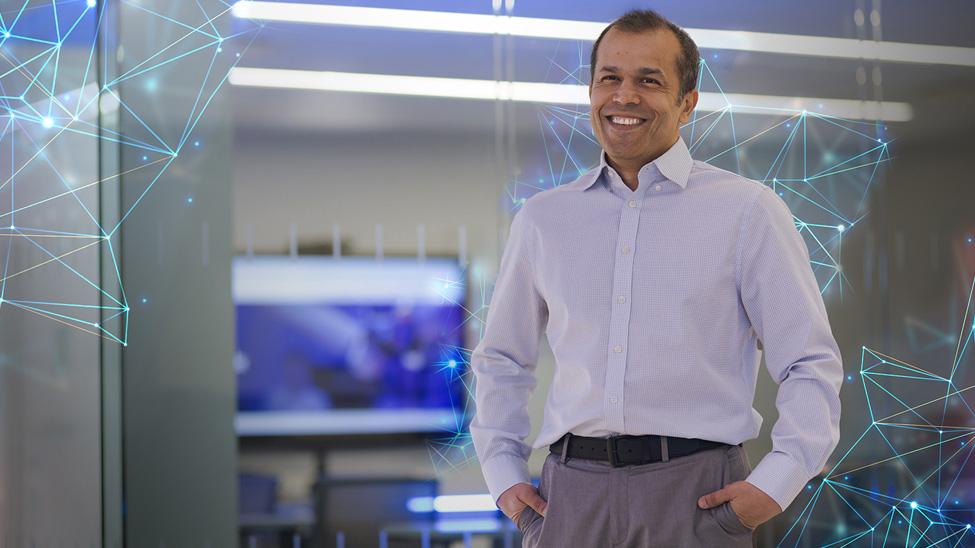
Breaking Barriers, Building Futures
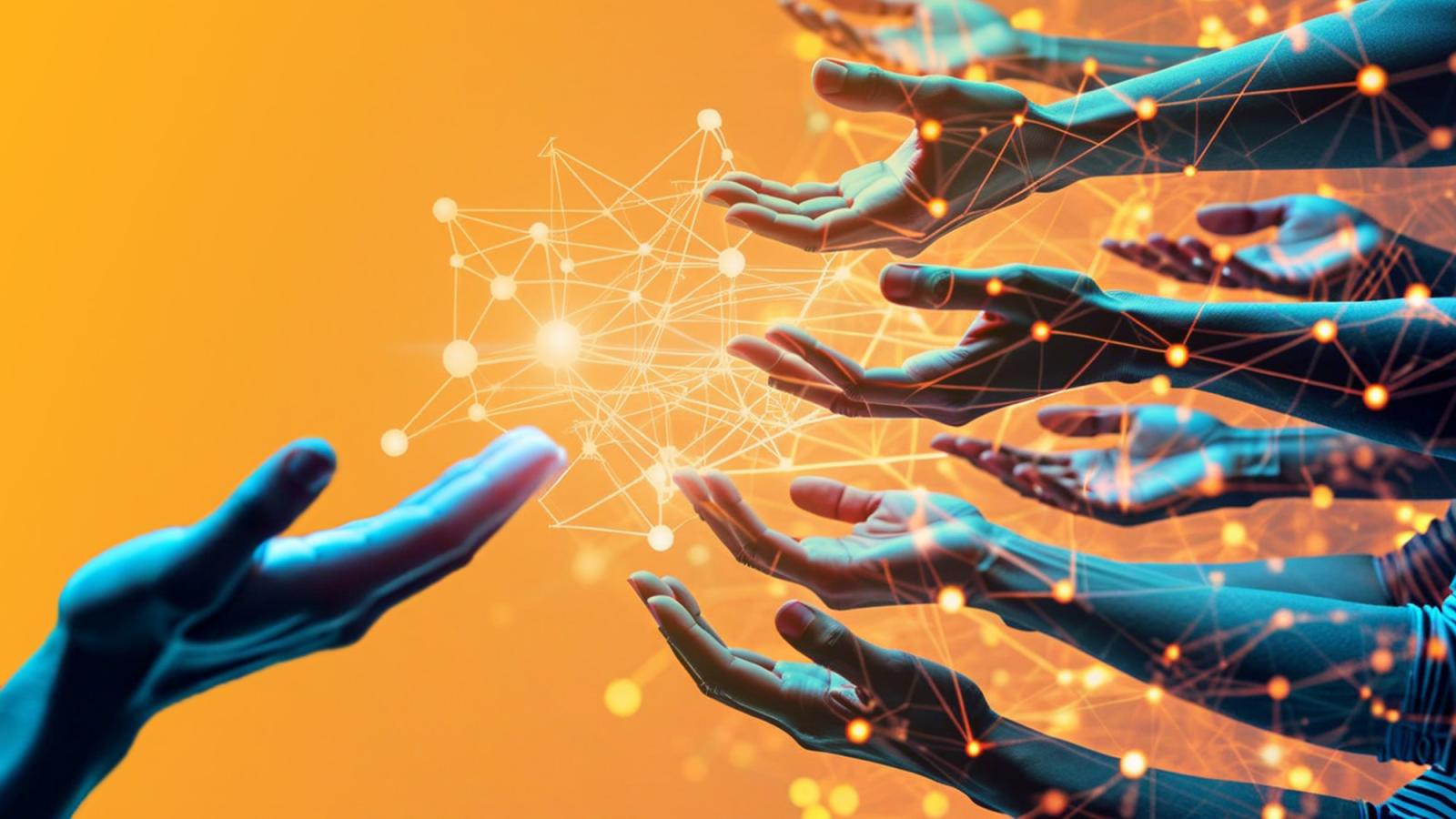
Artificial intelligence has transformed nearly every facet of modern life—shaping the way we work, communicate, and even think. But for all its advancements, AI is often viewed through a lens of cold efficiency, an impersonal force that automates rather than empowers. At Pace University, however, a growing number of researchers and educators are proving otherwise, harnessing AI not just as a tool of innovation, but as an engine for equity, inclusion, and social progress.
Reducing Administrative Overload
For many of the tens of thousands of immigrants who move to New York City every year, starting their own business offers a reliable path to financial independence. But one major obstacle stands in their way: paperwork.
“Legal forms—disclaimers, informed consent, liability waivers—are complicated for anyone to complete, and especially for immigrants with limited English,” said Lu Shi, PhD, an associate professor of health sciences at Pace University’s College of Health Professions.
“As part of my work, I show immigrants how generative artificial intelligence (GenAI) can help them to clear these hurdles to become a new American entrepreneur,” Shi said. “In the past, it might have taken hours to make sense of these documents. With AI, it takes minutes.”
“It’s a language that must be learned.”
Shi himself uses AI to address health equity, mental health, and health disparities. As a fellow at the Helene T. and Grant M. Wilson Center for Social Entrepreneurship, he’s conducting an AI needs assessment for New York City-area nonprofits working with underserved populations and teaching AI literacy to foreign-born residents.
The biggest hurdle, he said, is keeping pace with rapidly evolving technology. “How you enter a prompt into AI tools to get the kinds of answers and information you’re looking for is as important as language itself,” Shi said. “It’s a language that must be learned.”
Mitigating Banking Bias
Institutions are learning to converse with AI, too. Noushi Rahman, PhD, a professor of management science at the Lubin School of Business, has focused his AI research on making financial institutions’ lending practices more inclusive. In 2023, John Ratzan, PhD, a senior managing director at Accenture who studied at the Pace business school, and Rahman published a paper in the journal AI and Ethics, exploring how banks could use AI to extend credit to more low-income borrowers.

Banks have long been criticized for relying too heavily on algorithms to make loan decisions, a practice that can discriminate against economically marginalized groups. Ratzan and Rahman surveyed credit officers at 48 leading banks and developed a novel instrument to assess firms’ AI fairness, and suggested strategies for mitigating bias in automated decision-making. “You can have your cake and eat it, too,” he said. “Banks can be responsible, and also not lose money.”
Rahman is extending this line of research as a Wilson Center fellow into other industries, examining how AI is being deployed by leading social enterprises in economic development, education, environmental protection, health, civic engagement, and human rights. The goal, Rahman said, is to map “AI adoption pathways” that similar organizations can replicate.
“Sectors adopt different technologies based on unique needs,” he said. Understanding how these decisions are made can help socially minded nonprofits “draw inspiration from each other.”
Restoring Trust in the News
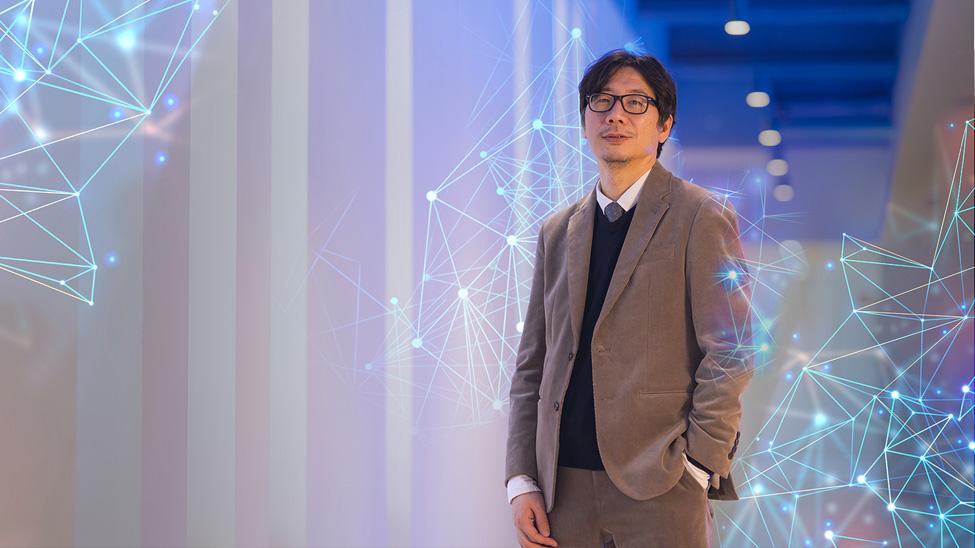
Nonprofits are already leading the way in AI adoption. A recent Google survey of more than 4,000 not-for-profits found that most organizations consider GenAI well-suited for everyday administrative tasks, like translation and fact-checking. Others see a role for AI in fundraising and communications, while McKinsey & Company, a global consultancy, has identified 600 use cases for how AI capabilities could be used to benefit society.
For news organizations, meanwhile, incorporating machine learning into their work can be a matter of survival.
Seong Jae Min, PhD, a professor of communication and media studies in the Dyson College of Arts and Sciences, researches how AI can help revitalize the journalism industry, which has been struggling with plummeting public trust and diminishing revenue. “AI can’t save journalism, but it can help if used properly," he said.
“From projects like the Panama Papers, to an analysis of spy plane flight paths, AI is making once impossible journalism possible, which serves the public good and helps to strengthen democracy.”
Min tracks journalism innovations and consults with newsrooms on the best use of technology. To his mind, the biggest advantage of GenAI and machine learning tools are the new types of reporting they enable. “When AI was first introduced in journalism, it was helping reporters and editors create simple stories, like company earnings reports and sports scores,” said Min, whose book, Rethinking the New Technology of Journalism, explores why this kind of news coverage holds little value for news consumers, and producers.
“But these days, AI is addressing things like gender bias in the news, and helping reporters find stories in troves of data,” he said. “From projects like the Panama Papers, to an analysis of spy plane flight paths, AI is making once impossible journalism possible, which serves the public good and helps to strengthen democracy.”
Breaking Down Barriers
Not every benefit offered by AI comes from building something new. To Ali Motamedi, PhD, a visual artist and lecturer at the Seidenberg School of Computer Science and Information Systems, the real power of AI lies in what it can break.
As part of his work as a Wilson Center fellow, Motamedi is leading Pace students on a bold AI-art journey to shatter preconceptions of difference. What he describes as a “digital book,” the multimedia exhibit, when it opens this year, will be anchored by an AI-generated “fused” language that he and his students are creating.
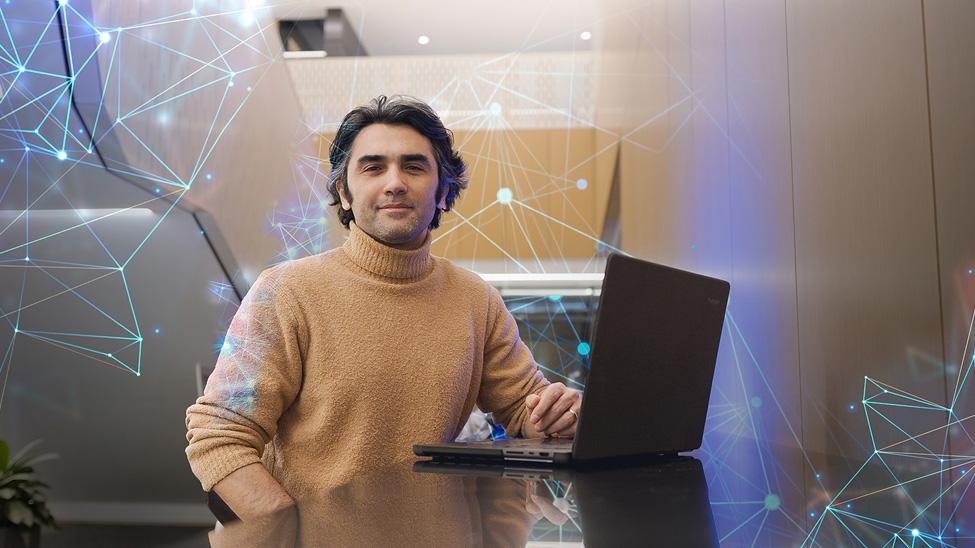
Motamedi doesn’t know precisely how this art experiment will unfold—that’s part of the joy of a creative project, he believes. He does have a hunch, however.
“Imagine you’re in a quiet, dark room in a gallery setting,” he said. “As you enter, you’re immersed in sound with an unknown yet strangely familiar language. On a screen will be text, some of which you’re familiar with, but most is indecipherable.”
“At first, you’re confused. But gradually, you get more comfortable, picking out sounds that reflect your own linguistic experience.”
Visitors will share in navigating a language that is no one’s, and everyone’s, Motamedi said. “It will be a dance between known and unknown, created with technology to inscribe a better understanding of our connection to each other.”
Reimagining Connection
While AI is often framed as a disruptor, at its core, it’s a connector—bridging gaps in language, access, and opportunity. Whether through legal assistance, financial inclusion, or artistic expression, Pace researchers are proving that AI can do more than just optimize processes; it can enrich human experiences and foster a deeper understanding of one another.
As AI continues to evolve, so will the questions around its ethical and societal implications. But in labs, classrooms, and studios across Pace, one principle remains constant: technology should serve people, not the other way around. Through their work, these scholars are demonstrating that AI is not merely about efficiency—it’s about empathy, creativity, and building a better, more inclusive future.
More from Pace
As artificial intelligence seeps into every facet of life, Pace scholars are working to harness the technology’s potential to transform teaching and research. While the road ahead is fraught with uncertainty, these Pace experts see a fairer and safer AI-driven future.
With artificial intelligence remodeling how healthcare is researched, and delivered, Pace experts are shaping the technology—and erecting the guardrails—driving the revolution.
From privacy risks to environmental costs, the rise of generative AI presents new ethical challenges. This guide developed by the Pace Library explores some of these key issues and offers practical tips to address these concerns while embracing AI innovation.
